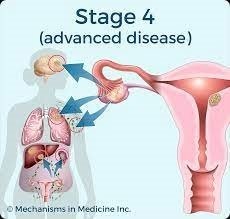What are some of the signs of Parkinson's disease?
Tremors, rigidity, bradykinesia/akinesia, postural instability
Dysphagia
Psychiatric changes: depression, anxiety, dementia, delirium, hallucinations
All of the above
The Correct Answer is D
Choice A: Tremors, rigidity, bradykinesia/akinesia, postural instability are correct because they are the cardinal motor symptoms of Parkinson's disease. They are caused by the degeneration of dopamine-producing neurons in the brain that control movement. Tremors are involuntary shaking of the limbs or other body parts. Rigidity is stiffness or resistance to movement. Bradykinesia/akinesia is slowness or absence of movement. Postural instability is impaired balance or coordination.
Choice B: Dysphagia is correct because it is a common non-motor symptom of Parkinson's disease. It is difficulty swallowing food or liquids. It can result from the impairment of the muscles involved in swallowing or from the reduced production of saliva. Dysphagia can cause malnutrition, dehydration, aspiration, or choking.
Choice C: Psychiatric changes: depression, anxiety, dementia, delirium, hallucinations are correct because they are also common non-motor symptoms of Parkinson's disease. They can result from the changes in the brain chemistry or structure, the side effects of medications, or the emotional impact of living with a chronic condition. Depression is a persistent feeling of sadness, hopelessness, or loss of interest. Anxiety is a feeling of nervousness, worry, or fear.
Dementia is a decline in cognitive functions such as memory, atention, or reasoning. Delirium is a sudden state of confusion, disorientation, or agitation. Hallucinations are false perceptions of things that are not there.
Choice D: All of the above are correct because they are possible signs of Parkinson's disease. However, not all patients experience all of these symptoms or to the same degree. The symptoms may vary depending on the stage and progression of the disease, the individual characteristics of the patient, and the treatment options available.
Nursing Test Bank
Naxlex Comprehensive Predictor Exams
Related Questions
Correct Answer is B
Explanation
Thick white, curd-like discharge is a common symptom of a yeast infection, which is caused by an overgrowth of candida. However, it is important to note that other conditions, such as bacterial vaginosis or Trichomonas infection, can also cause changes in vaginal discharge.
Therefore, further assessment and evaluation by a healthcare provider is necessary to determine the underlying cause and appropriate treatment plan. A Pap smear is not indicated based on the client's symptoms.
Correct Answer is A
Explanation
Stage IV ovarian cancer is an advanced stage, and it is unlikely that the cancer can be cured. While treatment may help manage the symptoms and slow down the progression of the disease, it is essential to have realistic expectations and understand the limitations of treatment options.
Option b, "My type of cancer has spread to other tissues" is a correct understanding of the situation and indicates the client has understood their diagnosis.
Option c, "I have chemotherapy after my hysterectomy" is an accurate statement about treatment and indicates the client has understood the plan of care.
Option d, "I may need to talk with my family about hospice" is also an appropriate statement, as clients with stage IV ovarian cancer may need to consider end-of-life care and hospice services

Whether you are a student looking to ace your exams or a practicing nurse seeking to enhance your expertise , our nursing education contents will empower you with the confidence and competence to make a difference in the lives of patients and become a respected leader in the healthcare field.
Visit Naxlex, invest in your future and unlock endless possibilities with our unparalleled nursing education contents today
Report Wrong Answer on the Current Question
Do you disagree with the answer? If yes, what is your expected answer? Explain.
Kindly be descriptive with the issue you are facing.
